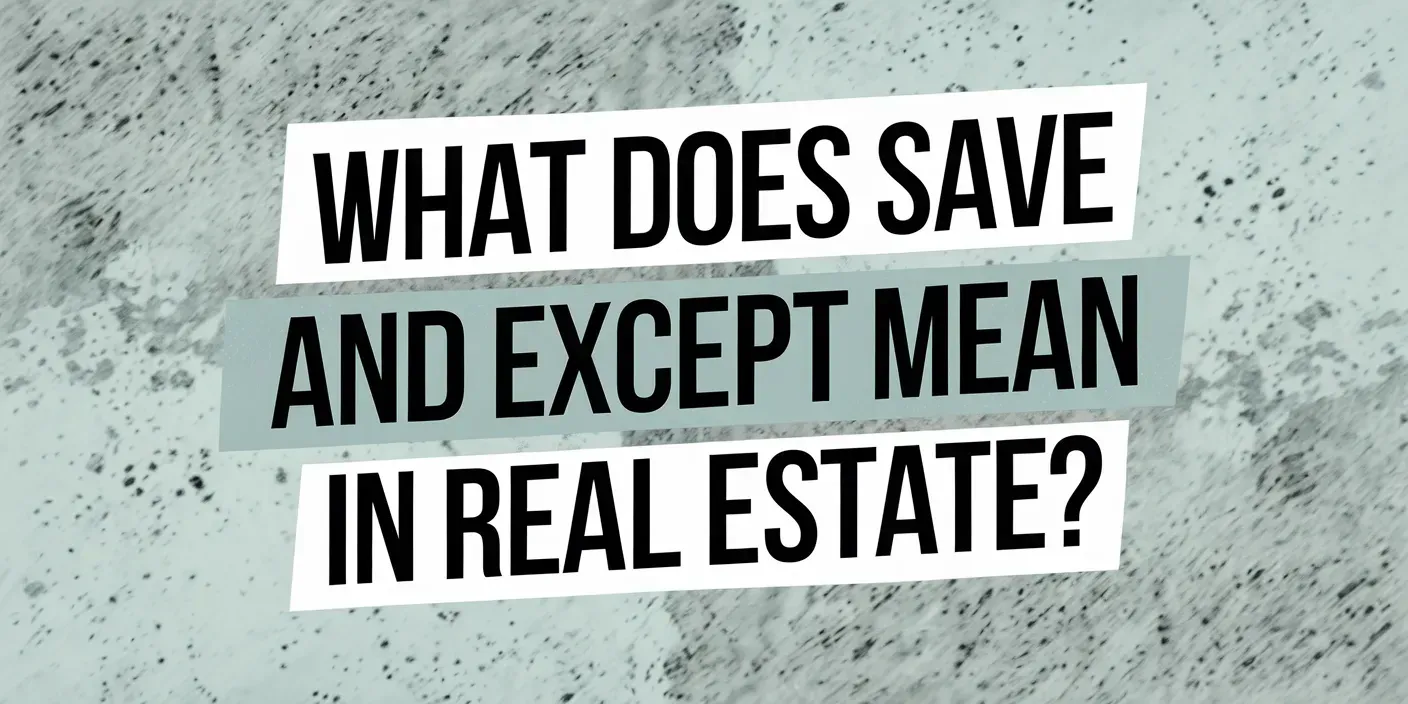
What Does "Save and Except" Mean in Real Estate?
In real estate transactions and property deeds, the phrase "Save and Except" refers to portions of a property explicitly excluded from a transfer of ownership. It denotes that certain parts of the property described are retained by the seller or previously conveyed to someone else and therefore not included in the current transfer.
Purpose of "Save and Except" in Deeds
"Save and Except" clauses clearly define property boundaries, prevent legal disputes, and provide explicit information about excluded parcels, easements, or rights. They ensure transparency between buyers and sellers regarding what is being purchased and what is explicitly omitted.
Common Uses and Examples
- Easements: A property sold may include language "save and except" a certain easement granted previously to utility companies for power lines or pipelines.
- Partial Sales: A landowner may sell a larger tract of land, explicitly excluding a smaller parcel they wish to retain.
- Previously Conveyed Property: If portions of the land were sold earlier, deeds will specify these parcels as "save and except" from the new sale.
Why is "Save and Except" Important?
Clearly stated exclusions prevent confusion or litigation regarding property ownership, boundaries, and usage rights. Ignoring "save and except" provisions can lead to disputes, costly lawsuits, or title insurance issues, highlighting the importance of thorough deed and survey review.
How Land Surveying Relates to "Save and Except"
Professional land surveyors play a crucial role by accurately identifying, documenting, and mapping excluded areas indicated by "save and except" clauses. This ensures all parties clearly understand the exact boundaries of transferred versus retained property.
Frequently Asked Questions
Q: Does "Save and Except" Affect Property Value?Yes. Excluding portions of property can impact overall valuation. Buyers should thoroughly understand these exclusions during negotiations.
Q: Can a "Save and Except" Clause be Removed?Only if the excluded portion is subsequently purchased or conveyed explicitly to the current owner.
Conclusion and Recommendations
Understanding "save and except" provisions is critical for both buyers and sellers. Consult with experienced surveyors and real estate attorneys to thoroughly review property deeds and surveys to prevent unforeseen complications.

